- Info
Atom-, Molekül- und Optische Physik
Theoretische und experimentelle Arbeitsgruppen am Physikalischen Institut auf dem Bereich der Atom-, Molekül- & Optischen Physik
- Quantenoptik und Statistik (AG Buchleitner)
- Molekül- und Optische Physik (AG Sansone)
- Experimentelle Atom-, Molekül- und Optische Physik (AG Schätz)
- Molekül- und Nanophysik (AG Stienkemeier)
- Biomolekulare Dynamik (AG Stock)
- Clusterphysik (AG von Issendorff)
- Astrophysik (AG von der Lühe)
Prof. Dr. A. Buchleitner
PD Dr. T. Wellens
Dr. S.Y. Buhmann (Emmy Noether Group - Macroscopic Quantum Electrodynamics)
One of our central concerns is the question of how complex dynamics arises in composite quantum systems, such as the helium atom or bosonic atoms in optical lattices; but also decoherence phenomena are on our agenda - not only because of their relevance to transport properties in ordered and disordered systems, but also because of their impact on quantum entanglement. The Emmy-Noether Research group of Stefan Yoshi Buhmann is concerned with the interaction of light with microscopic (atoms, molecules, electrons, neutrons) and macroscopic matter (metals, dielectrics, magnetodielectrics, chiral media, topological insulators ...) by means of macroscopic quantum electrodynamics. The phenomena arising from this interaction include van der Waals, Casimir-Polder and Casimir dispersion forces, spontaneous decay, quantum friction, the anomalous magnetic moment of the electron and nano-scale heat transfer. | | 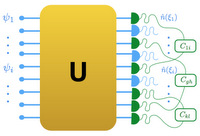 |
Prof. Dr. G. Sansone
Prof. Dr. T. Schätz
| The endeavor to control increasingly large systems of particles at the quantum level will be one of the driving forces for physical sciences in the coming decades. We aim to gain (i) deeper insight into complex dynamics that are influenced or even driven by quantum effects, and (ii) to control atoms and molecules at the highest level possible to set up many-body (model) systems, in a way, the ultimate form of engineering. Our experimental work builds on different trapping technologies. On the one hand, on conventional rf-traps, while we extend this approach in size and dimension toward two-dimensional arrays of individual traps spanned by micro-fabricated surface-electrode traps. On the other hand, we aim to explore and exploit trapping of ions and atoms by optical means. | | 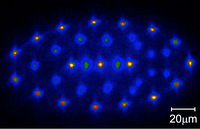 |
Prof. Dr. F. Stienkemeier
apl. Prof. Dr. M. Mudrich
| The focus of research lies in understanding the fundamental properties of atomic and molecular complexes or clusters and their interaction with light. We use spectrally highly resolving laser systems, ultra-short pulse femtosecond lasers for dynamical studies and facility-based light sources in the XUV range (synchrotron, free-electron-lasers). In order to resolve quantum state specific properties, isolated unperturbed atomic and molecular complexes at cold or ultracold temperatures are probed such as gas-phase atomic, molecular or cluster beams, or cluster-isolated molecular complexes. In particular helium nanodroplet isolation techniques at millikelvin temperatures are pursued. Furthermore, the dynamics of cold molecular collisions using velocity-tunable molecular beams and laser-cooled scattering targets is studied. | | 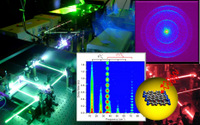 |
Prof. Dr. G. Stock
- Biomolecular Energy and Signal Transport
- Free Energy Landscapes of Biomolecules
- Vibrational Signatures of Biomolecular Dynamics
- Functional Dynamics of RNA
- Ultrafast Nonadiabatic Photoreactions
- Maximum Caliber
| | 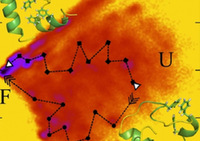 |
apl. Prof. Dr. B. von Issendorff
Die Arbeitsgruppe beschäftigt sich mit der Frage, wie sich die Eigenschaften fester Körper entwickeln, wenn man die Materie Atom für Atom aufbaut - sie schlägt damit eine Brücke von der Atom- und Molekülphysik zu der Festkörperphysik. Darüber hinaus eignen sich Cluster sehr gut als Modellsysteme für Probleme wie der Thermodynamik oder der Quantendynamik endlich großer Vielteichensysteme. | |  |
Prof. Dr. O. von der Lühe
Prof. Dr. S. Berdyugina
PD. Dr. M. Roth
apl. Prof. Dr. W. Schmidt
| Das Kiepenheuer-Institut für Sonnenphysik (KIS) betreibt Grundlagenforschung in der Astronomie und Astrophysik mit besonderem Schwerpunkt in der Sonnenphysik und ist Mitglied der Leibniz-Gemeinschaft. Wir betreiben federführend die Sonnenteleskope im Observatorio del Teide auf Teneriffa, sowie das alte Sonnenobservatorium auf dem Schauinsland bei Freiburg. Ebenso bieten wir Lehrveranstaltungen an der Universität Freiburg an und bilden wissenschaftlichen Nachwuchs aus. | | 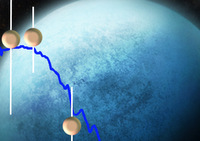 |





